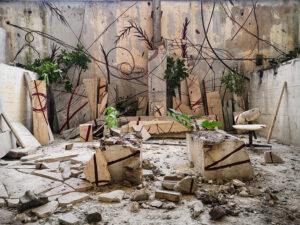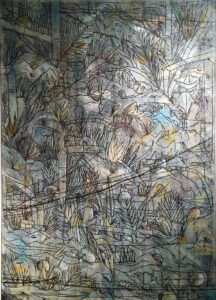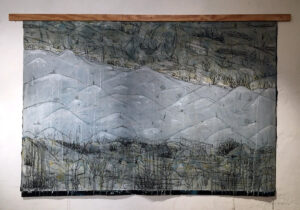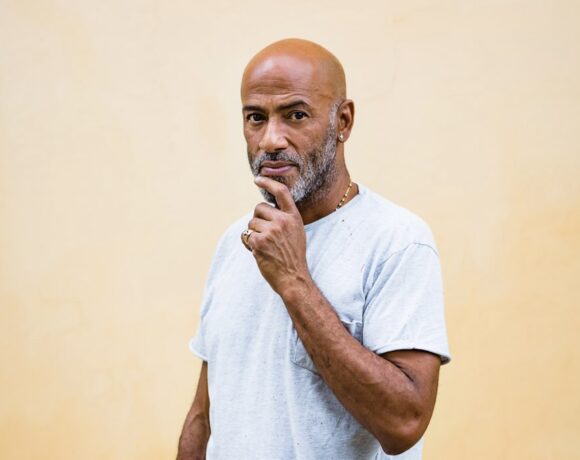Cities hide invisible networks of connections and analogies, inside them things are connected by thin threads of meaning and by imperceptible magnetisms ready to subvert the hierarchies of the gaze and open new panoramic chasms. A crack in the plaster, a disconnection in the pavement and any other element torn from its premises due to decay or vandalism could be the gateway to a different system of signs, unexpectedly pervasive. Like the iron cores of the reinforced concrete pylons, if left exposed due to incompleteness or brought to light from obsolescence, project into the space exploded and incoherent lines with respect to the building plan they were called to support, so the mental deconstruction that Crisa applies urban scenery amplifies every interstice transforming it into an incalculable graphic environment.
Every detail suddenly appears boundless, but at the same time the coherence of the whole, while expanding on several fronts, becomes more stringent. An example of this is Destructuring (2020), one of the most recent environmental interventions carried out by the artist in southern Sardinia within a courtyard-deposit strewn with debris and building residues. Here Crisa visually recomposes the dispersed fragments of the original structure through an expanded dissemination of vegetal and tribal signs that explain the subterranean relationships between those entities at first sight separate. In this way, the artist literally redesigns the urban space and materializes a border habitat between premonition and design, remodeling everything he encounters with his gaze according to his own vision.
This imaginative and intuitive approach also forms the basis for Periferie dell’anima (Peripheries of the soul), Crisa’s solo show at the Portanova 12 gallery, in which the artist transfers his graphic concept onto two-dimensional pictorial supports, such as canvas or old ceramic tiles. Both materials were prepared with a bituminous base layer then covered by a camouflage palette, different for each painting, which recalls the color ranges of the most common materials in the urban space, such as concrete, oxidized copper, steel, plaster or asphalt. The artist then intervenes on this superficial patina by making incisions that bring to light the brilliance of the bitumen in thin filaments and that bring out from the backdrop an obsessive continuous writing of houses, streets, pylons, satellite dishes, but also trees, magnified leaves and long scratches that do not refer to any figurative referent.
In some paintings the development of this dystopian contemporary slum saturates the entire available surface in a sort of infesting budding of the sign, while in others its expansion is dammed by stratified backgrounds that recall leaden skies or muddy pools of water, whose illusive depth seems to want to further compress the two-dimensionality of the graphic landscape. In other works, scattered fragments of sign seem to float weightless in the chromatic magma behind, together with words uprooted from their original language as sporadic outcrops of meaning. In still others, the backdrop and its “rock” engravings visually move away from the foreground due to peremptory gestural brushstrokes that shield the view, rejecting even those hints of figuration in the realm of dreams and invisible.
These liquid and large signs, which in a single movement run through the entire surface connecting the extremes, are the same ones that in the artist’s outdoor interventions redesign the environmental surfaces, manifesting, perhaps on the canvas more clearly than in the urban context, their nature of ideograms metropolitan that derive their form from a free stylization of those same elements that will then go on to interpret and re-code. And it is precisely Crisa’s acute sensitivity in extrapolating atmospheres, details and ciphers from the inextricable intertwining of the visible chaos of the city to hybridize them in her captivating emotional landscapes, I believe, is the most interesting feature of her work, which does not suffer compromises in the passage from the street at the end art.
Info:
Crisa. Periferie dell’anima
curated by Antonio Storelli e Massimo Cattafi
02/10 – 22/11 2020
Portanova 12
Via Portanova 12 Bologna
 Crisa, Destrutturazione, 2020
Crisa, Destrutturazione, 2020
 Crisa, Caos, 2020
Crisa, Caos, 2020
 Crisa, Sabbie bianche, 2020
Crisa, Sabbie bianche, 2020
Graduated in art history at DAMS in Bologna, city where she continued to live and work, she specialized in Siena with Enrico Crispolti. Curious and attentive to the becoming of the contemporary, she believes in the power of art to make life more interesting and she loves to explore its latest trends through dialogue with artists, curators and gallery owners. She considers writing a form of reasoning and analysis that reconstructs the connection between the artist’s creative path and the surrounding context.






NO COMMENT